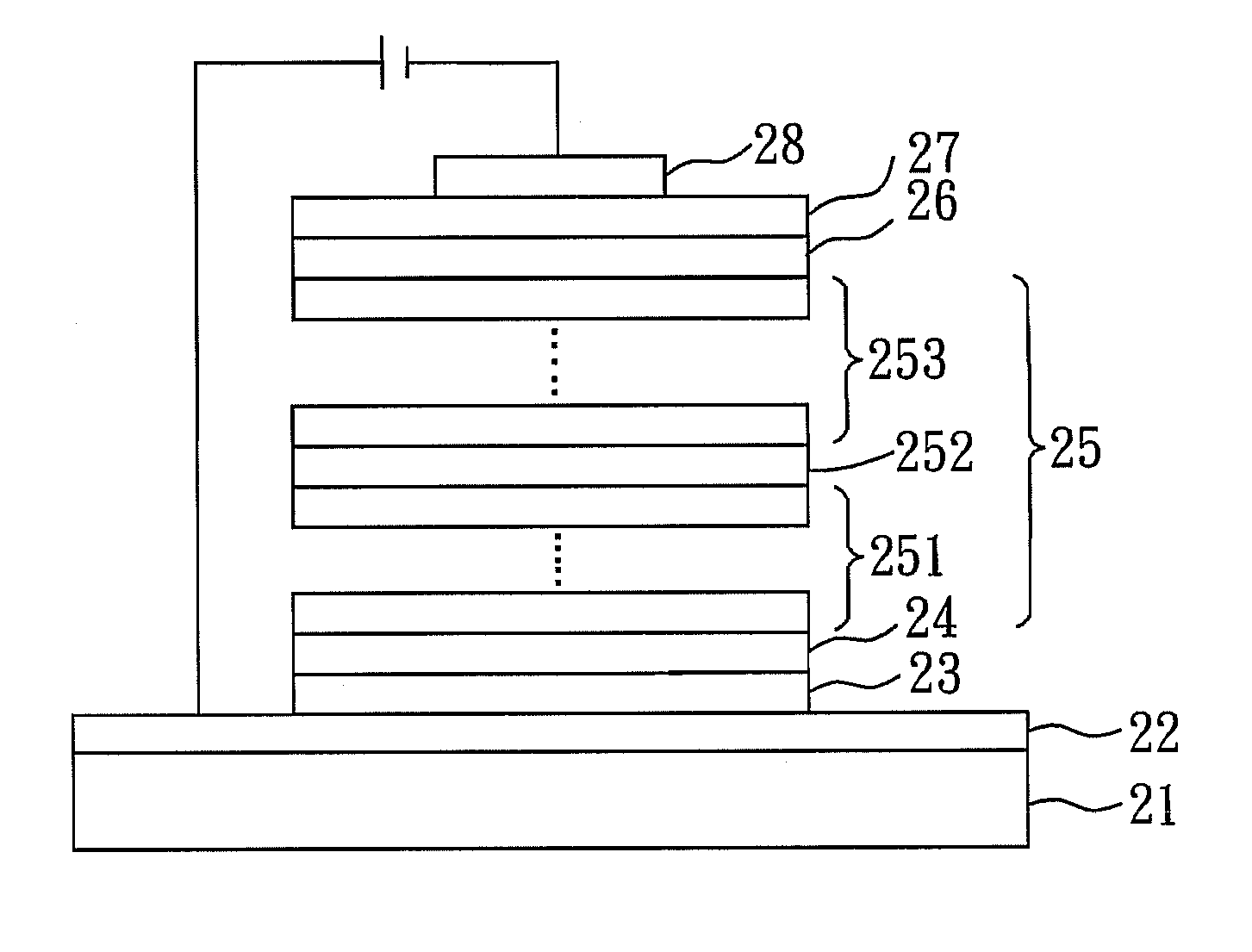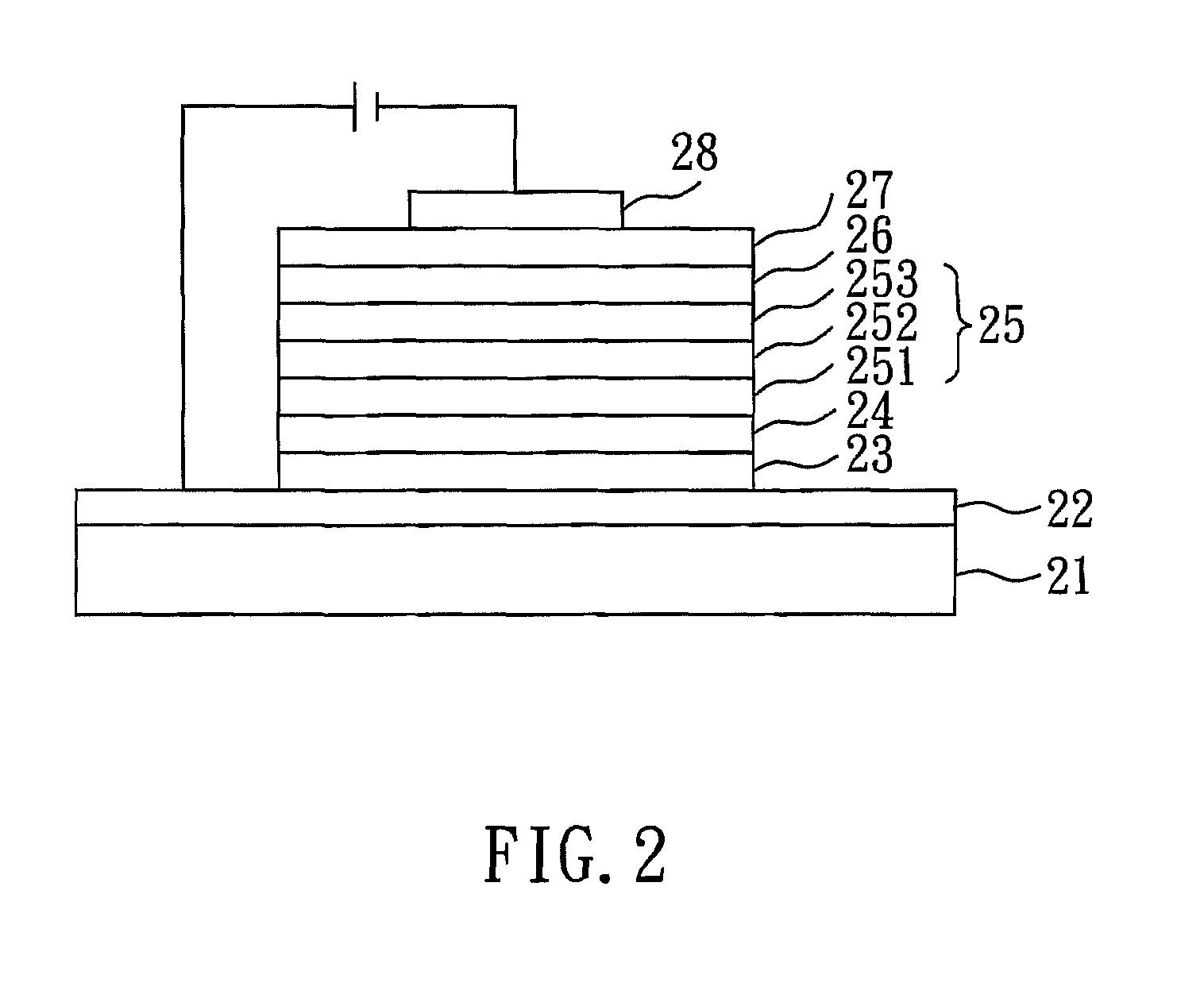Organic light-emitting diode with high color rendering
a light-emitting diode and organic technology, applied in the field of organic light-emitting diodes with high color rendering, can solve the problems of high providing cost, difficult to improve the color rendering index and power or current efficiency at the same time, and achieve excellent color rendering index and high power or current efficiency.
- Summary
- Abstract
- Description
- Claims
- Application Information
AI Technical Summary
Benefits of technology
Problems solved by technology
Method used
Image
Examples
example 1
[0029]First, a substrate 21 is provided with a first electrode 22 formed thereon. In the present example, the substrate 21 is a glass substrate and the first electrode 22 is an ITO anode of 125 nm in thickness.
[0030]Then, a PEDOT:PSS polymer is coated on the first electrode 22 by spin coating to form a hole injection layer 23. After that, TAPC small molecules are vacuum evaporated to form a hole transport layer 24 on the hole injection layer 23. In the present example, the hole transport layer 24 has a thickness of 10 nm.
[0031]MDP3FL as a deep blue dye and DSB as an azure dye are mixed in THF, followed by vacuum drying to provide an evaporating source, which is then used to form a first light-emitting layer 251 on the hole transport layer 24. In the present example, the concentration of the DSB is 3 wt % of the MDP3FL, and the first light-emitting layer 251 has a thickness of 10 nm.
[0032]Then, a spacer 252 is formed on the first light-emitting layer 251. In the present example, the ...
example 2
[0040]The OLED of the present example is provided by the same method as described in the Example 1, except that the spacer in the present example is made of TCTA.
[0041]The OLED provided by the present example is tested by a 3.5V driving voltage test and can emit white light. With brightness of 100 cd / m2, the luminescent efficiency is 12.5 Im / W; whereas with brightness of 1000 cd / m2, the luminescent efficiency is 7.5 Im / W. Meanwhile, the obtained white light from the OLED of the present example has a CIE coordinate of (0.43, 0.44) and has a CRI value of 94.
example 3
[0042]The OLED and the method for fabricating the same according to the present example are the same as those described in the Example 1, except that, as shown in FIG. 3, the light-emitting region 25 includes a plurality of first light-emitting layers 251, a spacer 252 and a plurality of second light-emitting layers 253 in sequence. Herein, each first light-emitting layer 251 is the same in material and each second light-emitting layer 253 is the same in material.
PUM
 Login to View More
Login to View More Abstract
Description
Claims
Application Information
 Login to View More
Login to View More - R&D
- Intellectual Property
- Life Sciences
- Materials
- Tech Scout
- Unparalleled Data Quality
- Higher Quality Content
- 60% Fewer Hallucinations
Browse by: Latest US Patents, China's latest patents, Technical Efficacy Thesaurus, Application Domain, Technology Topic, Popular Technical Reports.
© 2025 PatSnap. All rights reserved.Legal|Privacy policy|Modern Slavery Act Transparency Statement|Sitemap|About US| Contact US: help@patsnap.com



